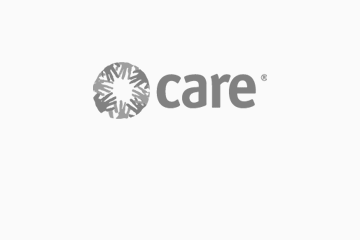Almost half of Pakistan’s population lives below the poverty line. Donate now.
Almost half of Pakistan’s population lives below the poverty line. Donate now.
Over the past decade, Pakistan has faced a series of large-scale disasters, with millions affected by disastrous floods, cyclones, earthquakes and displacement.
Almost half of Pakistan’s population live below the poverty line, and the country ranks as one of the world’s worst in terms of gender equality and equitable division of resources and opportunities among men and women.
Largely dependent on small-scale agriculture, Pakistan is especially vulnerable to extreme weather brought about by climate change.
When an emergency hits, we’re on the ground to provide communities with the assistance they need to survive: clean water, sanitation, food, health services and shelter.
We’re also working in some of the most remote and logistically challenging areas of Pakistan to help address the underlying causes of poverty.
Our special focus on women and girls means working with local partners to provide better access to health services and understanding of reproductive, maternal and child health.
Fast Facts
Population: 202 million (July 2016 est.)
Life expectancy: 67.7 years (65.8 years male, 69.8 years female) (2016 est.)
Infant mortality: 53.9 deaths/1,000 live births (2016 est.)
Under-5 mortality*: 81 deaths/1,000 live births (2015 est.)
Maternal mortality: 178 deaths/100,000 live births (2015 est.)
Adult literacy rate: 57.9% (69.5% male, 45.8% female) (2015 est.)
Access to improved drinking water: 91.4% (93.9% urban, 89.9% rural)
Access to improved sanitation: 63.5% (83.1% urban, 51.1% rural)
Labour force participation rate^: 83% male, 25% female (2014 est.)
Percentage of seats held by women in national parliament^: 21%
GDP per capita: $5,000 (2015 est.)
Source: CIA World Factbook, *UNICEF, ^World Bank
Pakistan’s 2012 floods
In 2012, monsoon rains in southern Pakistan devastated local communities, destroying homes and crops and affecting five million people. Within days, the crisis saw more than 297,000 families in need of emergency shelter.
In the country’s most affected provinces of Punjab, Sindh and Baluchistan, we provided emergency medical services through mobile medical camps, mosquito nets, small cash grants, and cash-for-work projects. Following the crisis, together with our local partners, we provided free medical assistance and skills training to vulnerable communities, especially mothers and children.


Pakistan’s 2010–11 floods
In 2010 Pakistan experienced the worst floods in living memory. Around 20.2 million people were affected – more than the 2004 tsunami, the 2005 Kashmir earthquake and the Haiti earthquake combined. One year later, new flooding affected more than 9 million people, with the southern province of Sindh the worst affected.
During the crises we assisted more than one million people, responding to the urgent need for food, hygiene and emergency shelter. We provided essential relief supplies such as mosquito nets, blankets, hygiene kits, healthcare and clean water supplies to support communities as they recover and rebuild.
Donate now
Support our ongoing work to create a more equal world.
Your donation can help end extreme poverty and give people the means to build a better future for themselves in countries like Pakistan.
For those living in extreme poverty, your support brings education and training, healthcare and clean water, nutritious food, and new ways to earn an income. And in times of crisis, you help us deliver emergency relief. Please donate today.
Lessons and Impact
We analyse and evaluate our projects to monitor results and learn how we can improve programs. Below is a selection of recent reports on CARE’s work in Pakistan.
- Report: CARE International: ‘Advocating for Improved Maternal Health Policy and Practice for Adolescent Girls and Young Mothers: Key Achievements, Lessons Learned and Way Forward Recommendations’ (2013)
- Report: CARE Canada: ‘Assessment of Private Sector Partnerships and the Role of Cash Grants in Emergency’ (re: 2010 floods)
More CARE evaluation reports from Pakistan and other countries are available at CARE’s Electronic Evaluation Library.
Other resources and highlights
-
 Download
DownloadWater + Impact Report: Walking the Talk 8MB
Case studies of CARE's life-saving water and sanitation efforts from around the world
-
 Download
DownloadImproved Maternal Health for Young Mothers 5 MB
In Pakistan, CARE provides maternal health support for young mothers and their babies
-
 Download
DownloadPrivate Sector Partnerships and the Role of Cash Grants in Emergency Response 4 MB
CARE's disaster relief efforts in the wake of the devastating 2010 Pakistan floods
-
 Download
DownloadAsia Impact Report 5025KB
A review of CARE's work in Asia over five years from 2005-2010
Banner image ©Warrick Page/CARE

